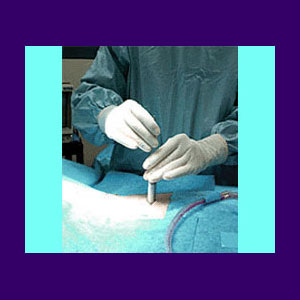
Epidural injections are one of the most widely used treatments offered for a variety of back pain conditions. Injection therapy is often prescribed when more conservative therapies fail and before spinal surgery is considered as a final option. There are different types of injection therapies all designed to accomplish specific individual goals. It is important to discuss the risks and benefits of each type of injection therapy with your doctor prior to commencing treatment.
Personally, I am appalled by the overly casual nature of epidural treatment in the dorsopathy sector. This invasive form of therapy has definite risks, some of which are very significant. Epidurals also demonstrate a relatively high rate of complications. Furthermore, most types of epidurals provide transient benefits, if any at all, while most patients are under the impression that the shots are designed to cure them completely. This is typically due to a physician who neglects to provide a complete and objective view of the therapy prior to treatment.
This dialog evaluates epidural injections for back pain diagnosis and treatment.
Types of Epidural Injections
There are varying substances utilized in all spinal injection therapies, as well as various applications. Some of the most common types of back pain injections include all of the following:
Prolotherapy involves irritating substances which are injected in order to enact an organic healing response from the body. This is a controversial modality, but has shown positive results for treating certain types of back pain conditions.
Anesthetic injections are also called nerve blocks. These injections consist of long life anesthetics which can deaden pain in a given area of the back. These injections are very effective for some types of pain, but do have some drawbacks. First, they are symptomatic treatment and must be renewed indefinitely in order to maintain effectiveness. Second, these shots are often used in the diagnosis of certain pain syndromes. While they do numb pain caused by many anatomical conditions, they can also create the perfect circumstances for the misdiagnosis of physical or psychosomatic back pain.
Anesthetic injections might be used during the diagnostic evaluation process to locate the origin of back or neck pain. Be warned that diagnosis using anesthetic injections is not at all an accurate science.
Individual drugs and substances are also used for specific spinal conditions. The most common are injections used to either lubricate problematic spinal joints or the injections used to dissolve irritating proteins leaking from herniated intervertebral discs. Flushing injections for the treatment of chemical radiculitis may be one of the better uses of epidural therapy.
Epidural Procedure
A good doctor will always administer an epidural while viewing the procedure under fluoroscopy (live spinal x-ray). This way, there is far less chance for error in locating the correct injection site. This also minimizes the chances of a potentially dangerous complication from puncturing the spinal thecal sac or hitting a nerve directly. The needle used will usually be long and ultra thin for comfort.
The injection will be administered into the correct anatomical location corresponding to the painful complaint and the contents of the syringe will be carefully injected into the appropriate treatment zone. The entrance wound will not require any special care, but might be sore for up to 24 hours. The patient can return home from this outpatient procedure immediately.
Typical complications may include continued bleeding, spinal fluid leak, infection or nerve damage. Of all of these, infection and CSF leaks are relatively common and may cause severe and even life-threatening health issues which may require surgery to correct.
Epidural Injections Guide
Many patients have reported good results from using injection therapy for their back ache complaints. Remember that this therapy is not a cure (in most cases and diagnoses) and must be repeated over and over to provide lasting relief. Some of the drugs used may have severe enduring side effects, so it is not advised to continue this treatment any longer than absolutely necessary. However, when compared to the risks of surgery, epidural injection therapy is still a less dangerous option for the temporary relief of some physically-induced back pain conditions.
Remember to always seek epidural treatment for a specialist who will utilize fluoroscopy. Many doctors do not offer this added protection, feeling it is not worth the time or effort. In essence what they are telling you is that they do not consider your life or health worth the extra time or effort. How does this make you feel? Maybe it’s time to find a new doctor.




